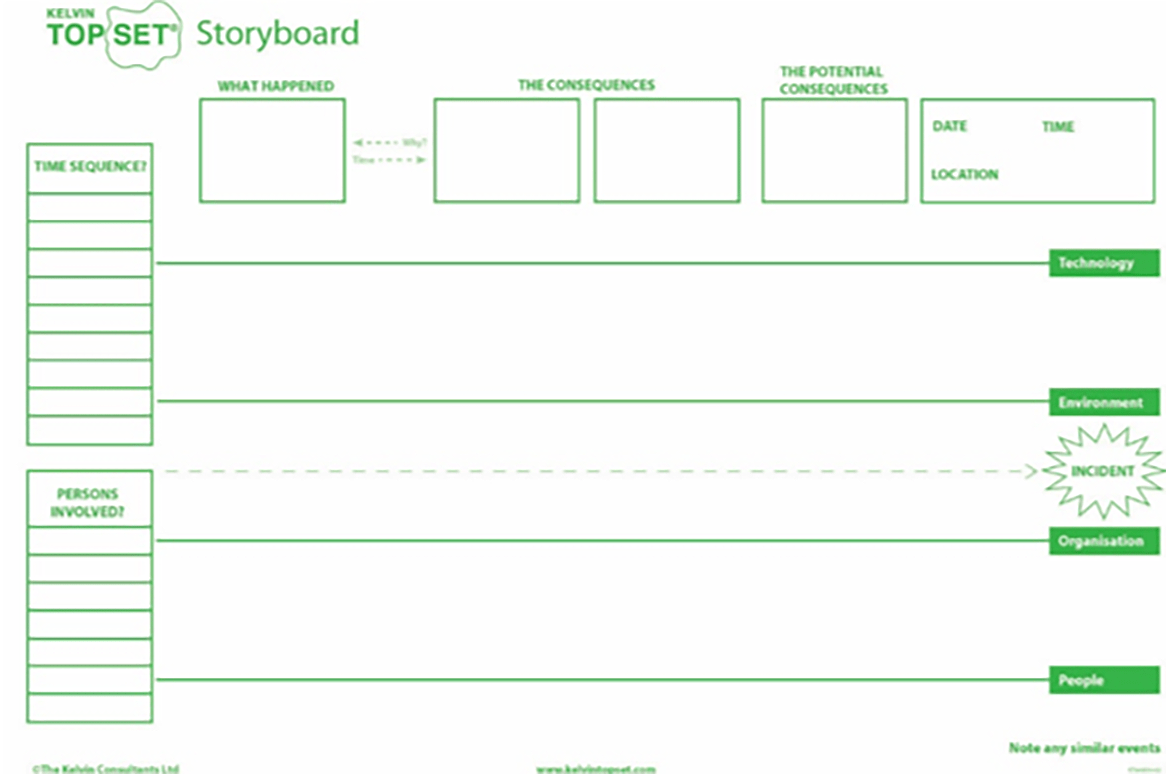We at Kelvin TOP-SET make use of a Storyboard system for recording the progress of our investigations prior to completing a root cause analysis. The idea is not unique. Storyboarding is primarily used in the film industry, where animations and film clips are planned out in advance.
We certainly advocate the concept of Storyboarding for planning, but we take the process one step further by suggesting that the Storyboard is used throughout the entire investigation as the storehouse of all information relating to the investigation. In particular, facts you know, and questions that require an answer. Much else can be recorded too: time lines, details of witnesses, photographs, documentation, sources of evidence, and the all-important Incident Statement.

How might the Storyboard be used?
Our Storyboards are laid out in such a way that they encourage compartmentalisation. There’s no compulsion to compartmentalise, but the concept often aids to clarify thoughts and work in general. So, if you wish to place Post-its in the POET categories of People, Organisation, Environment and Technology, then you are enabled to do so. There’s also a reminder at the foot of the Storyboard to not forget the history of previous events. Post-its are stuck to the Storyboard, of course. So, what are the rules? There are very few:
Time lines are very useful, and there are a number of different ways in which they can be employed on our Storyboards:



